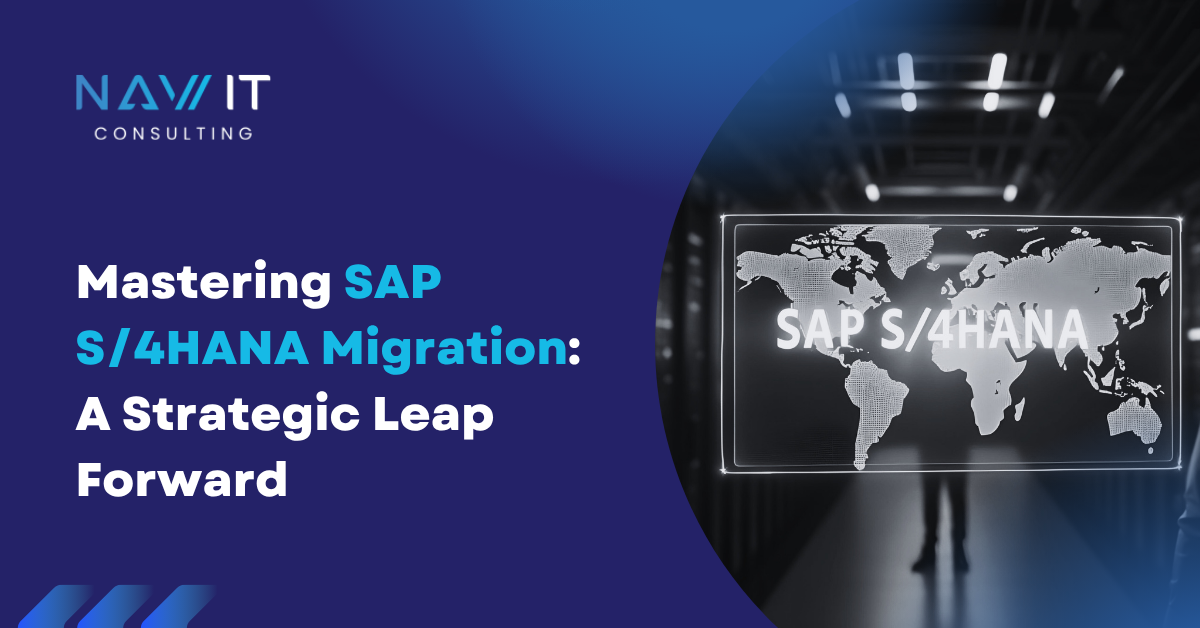As the 2027 deadline for SAP ECC support looms, migrating to SAP S/4HANA Migration is a strategic imperative for organizations aiming to modernize their enterprise resource planning (ERP) systems. Built on the HANA in-memory database, S/4HANA delivers unparalleled speed, real-time analytics, and seamless integration with advanced technologies like artificial intelligence (AI), machine learning, and the Internet of Things (IoT). This migration is not just a technical upgrade but a transformative opportunity to streamline operations, enhance decision-making, and future-proof businesses. However, the process is complex, requiring meticulous planning to overcome challenges and maximize benefits.
Why Migrate to S/4HANA?
SAP S/4HANA redefines ERP capabilities. Unlike its predecessor ECC, it leverages HANA’s in-memory computing to process massive datasets instantly, enabling real-time insights. Its simplified data model reduces redundancy, lowers storage needs, and accelerates performance. The Fiori interface provides an intuitive, mobile-friendly user experience, improving employee productivity. S/4HANA also integrates with modern technologies, allowing businesses to incorporate AI-driven automation, predictive analytics, or IoT-enabled supply chain tracking.
Remaining on ECC poses significant risks. By 2027, SAP will end mainstream support, leading to higher maintenance costs, security vulnerabilities, and compliance challenges. Without migration, organizations may struggle to adopt new technologies, losing their competitive edge. S/4HANA empowers businesses to optimize processes, make data-driven decisions, and adapt to market changes swiftly, ensuring long-term growth.
Migration Strategies
Organizations can choose from three primary migration approaches, each with distinct advantages:
-
Greenfield: This involves a fresh S/4HANA implementation, rebuilding the ERP system from the ground up. It allows businesses to redesign processes, eliminate legacy inefficiencies, and adopt best practices. However, it requires significant time, resources, and change management, making it ideal for organizations seeking a complete overhaul.
-
Brownfield: A system conversion that upgrades the existing ECC environment to S/4HANA while retaining customizations. It’s faster, less disruptive, and preserves existing investments but may carry forward outdated processes, limiting full optimization.
-
Hybrid: A selective approach blending greenfield and brownfield, modernizing specific processes while retaining critical legacy components. It suits businesses needing a phased transition or those balancing innovation with operational continuity.
Selecting the right strategy depends on factors like business goals, system complexity, budget, and readiness for change.
Challenges to Navigate
S/4HANA migration is not without hurdles. Data quality is a critical issue, with 70% of organizations facing challenges like duplicate, incomplete, or inconsistent data. Poor data quality can lead to errors, delays, or system failures post-migration. Cleansing, transforming, and validating data before migration is essential. Customizations from ECC often require significant rework, as S/4HANA’s architecture differs, and incompatible code can disrupt functionality. Ensuring system interoperability—especially during dual maintenance of ECC and S/4HANA—strains IT resources. Budget overruns are also common, with 60% of migrations exceeding planned costs due to unforeseen technical complexities, extended timelines, or additional consulting fees.
Organizational change management is another challenge. Employees accustomed to ECC may resist the new Fiori interface or reengineered processes, necessitating robust training programs. Aligning stakeholders and securing leadership buy-in are critical to overcoming resistance and ensuring project success.
Keys to a Successful Migration
A well-executed migration hinges on strategic preparation and execution:
-
Start Early: Begin planning 12-24 months in advance to assess systems, define scope, and avoid rushed decisions as the 2027 deadline approaches.
-
Engage Leadership: Secure executive support to align migration with strategic objectives, allocate resources, and drive organizational buy-in.
-
Prioritize Data Quality: Use tools like SAP’s Data Migration Cockpit to clean, map, and validate data, ensuring accuracy and minimizing post-migration issues.
-
Collaborate with Experts: Partner with SAP-certified consultants and leverage programs like RISE with SAP, a cloud-based offering that simplifies migration with integrated tools and services.
-
Test Extensively: Conduct multiple rounds of testing, including system integration, performance, and user acceptance testing, to identify and resolve issues before go-live.
-
Focus on Change Management: Invest in training and communication to prepare employees for new processes and interfaces, reducing resistance and boosting adoption.
Frequently Asked Questions
1. How long does an S/4HANA migration take?
Timelines vary by approach and complexity. Greenfield migrations typically take 12-24 months, brownfield conversions 6-12 months, and hybrid approaches depend on scope.
2. What is RISE with SAP?
RISE with SAP is a managed cloud solution combining tools, services, and support to streamline S/4HANA migration and deployment.
3. Can we retain existing customizations?
Yes, but many require adaptation due to S/4HANA’s architecture. Brownfield migrations preserve more customizations, while greenfield involves rebuilding.
4. How can costs be managed?
Define a clear scope, use SAP tools, and engage experienced consultants to minimize unexpected expenses and delays.
5. Is cloud deployment mandatory?
No, S/4HANA supports on-premise, cloud, or hybrid deployments, offering flexibility based on business needs.
6. What are the risks of missing the 2027 deadline?
Post-2027, ECC users face increased maintenance costs, security vulnerabilities, and compliance risks due to unsupported software.
7. How does S/4HANA enhance performance?
The HANA database processes data faster, reduces latency, and supports real-time analytics, enabling quicker, informed decisions.
8. Is S/4HANA suitable for small businesses?
Yes, cloud-based S/4HANA solutions and simplified implementations make it accessible and scalable for smaller enterprises.
Conclusion
Migrating to SAP S/4HANA is a transformative journey that positions businesses for efficiency, innovation, and growth. By selecting the appropriate migration strategy, addressing data and technical challenges, and following best practices, organizations can unlock S/4HANA’s full potential. With the 2027 ECC support deadline approaching, now is the time to plan and execute a seamless migration to ensure long-term success in a competitive landscape.
